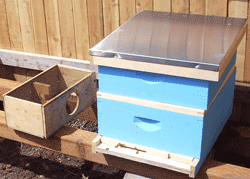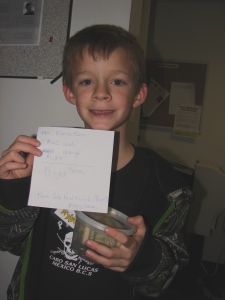If you haven’t been to Marra Farm lately, things might look a lot different next time you visit! Lettuce Link has some incredible recent additions to the farm, thanks to our amazing partners and hardworking volunteers.
Compost Bins
Young’s Market donated their time and money installing six new compost bins at Marra. Lettuce Link is thrilled to have these new bins, as they will help us build compost onsite and move us away from importing compost from other locations. By the start of next growing season, there will be lots of compost ready to add great nutrients to the soil.
Mushroom Hut
Marra has a brand new mushroom hut and mobile farm stand courtesy of Magnusson Klemencic Associates (MKA). The engineers at MKA designed the building and came to the farm en masse on Saturday, September 13 to bring their vision to life. Produce from Lettuce Link’s giving Garden at Marra Farm is available through a work trade program to anyone who has trouble affording and accessing fresh vegetables. The new mushroom hut will allow Lettuce Link to meet diversified interests from individuals in the community, at our partnering food banks, and at South Park’s Community Kitchen nights, and is a great educational tool for children and adults who are growing food for fun or to become self-reliant.
Mobile Farm Stand
One of Lettuce Link’s areas of emphasis is creating access points in the south end of Seattle for fresh produce. For individuals who don’t have time or capacity to participate in our work trade program, the mobile farm stand is a particularly exciting project. The stand creates a space directly in the middle of South Park at the farm for people to find affordable, organic produce. Local growers in the Marra Farm Coalition can sell their produce directly onsite. Stop by Saturdays from 11am-2pm to pick up some veggies from Marra Farm’s collective of growers!
Children’s Shed Addition & Makeover
South Park Arts gave our children’s shed a great makeover, complete with chalkboards on the walls! This group has worked with children at Marra for years on many art projects, and it’s wonderful to see this lasting, colorful piece thanks to them.
Hamm Creek Signage
Lastly, a very exciting, beautiful new project this year was made possible due to the King County Conservation District, Subaru Foundation, and the Russell Family Foundation. Brand new multilingual signs (in English, Spanish and Vietnamese) about the Hamm Creek Loop were installed along the perimeter of the farm on beautiful cedar posts. Come by for a walk around Marra and you’ll read about the animals you might find in and around the creek, take a peek into the water with a periscope, and learn about foraging native edible berries and the history of the creek.
If you or a group are interested in volunteering with Lettuce Link, please contact volunteers@solid-ground.org.
Filed under: Lettuce Link | Tagged: Hamm Creek, King County Conservation District, Magnusson Klemencic Associates (MKA), Marra Farm, Russell Family Foundation, South Park Arts, Subaru Foundation, volunteering, Young's Market | Comments Off on New additions to Marra Farm!

















